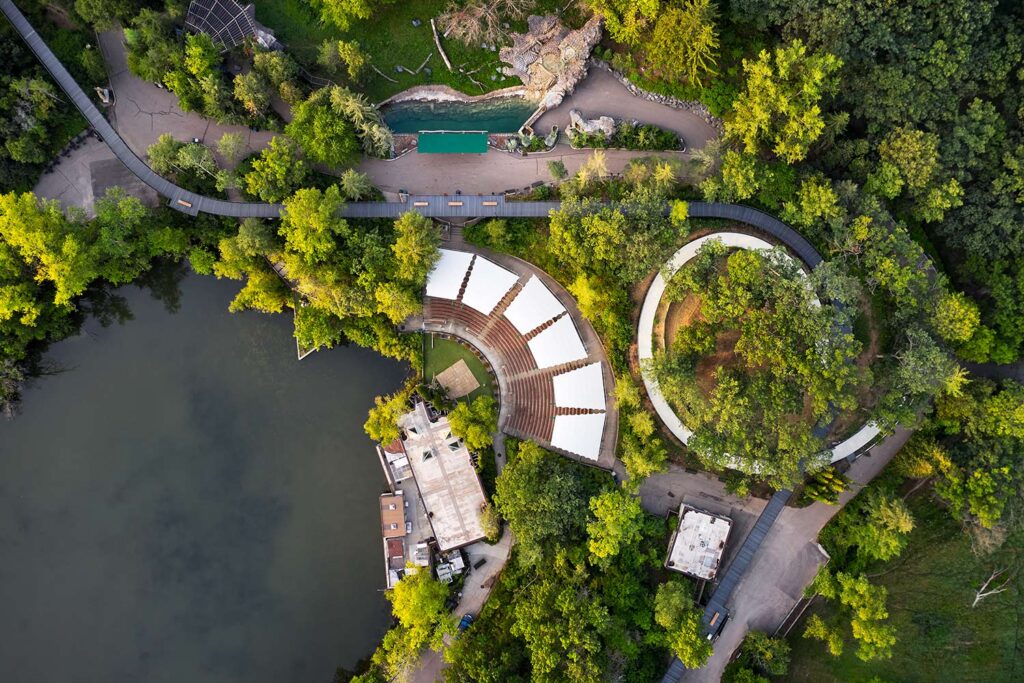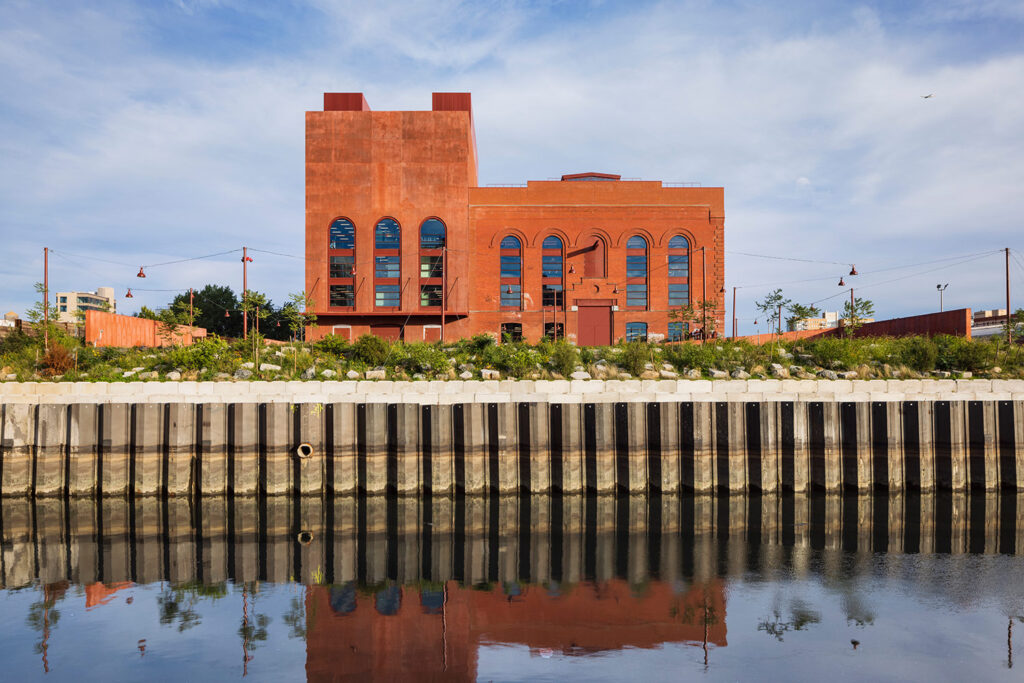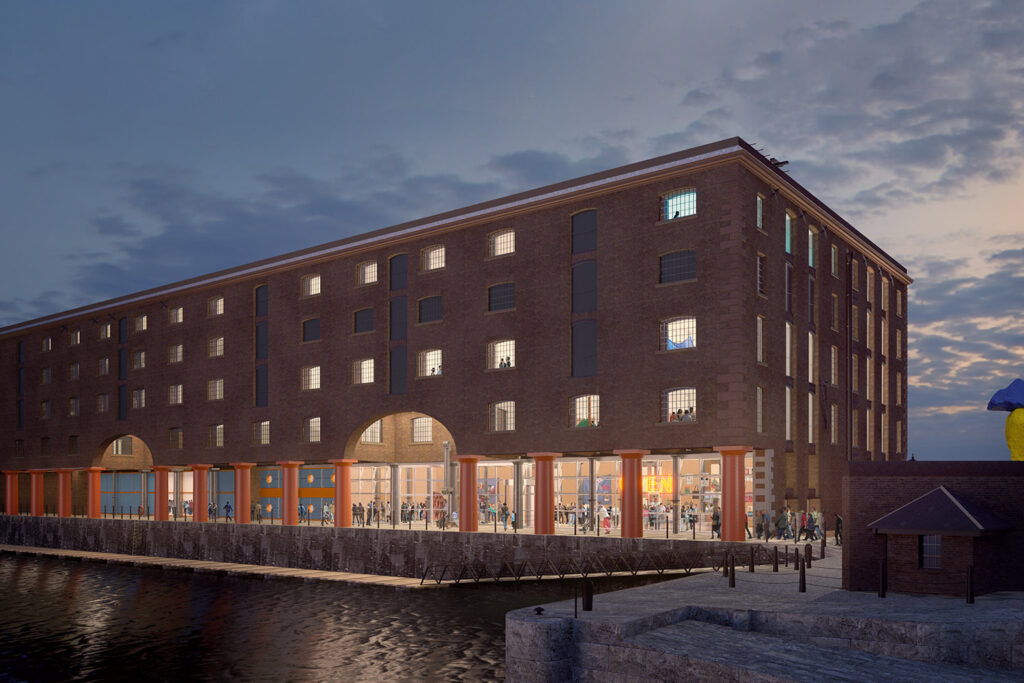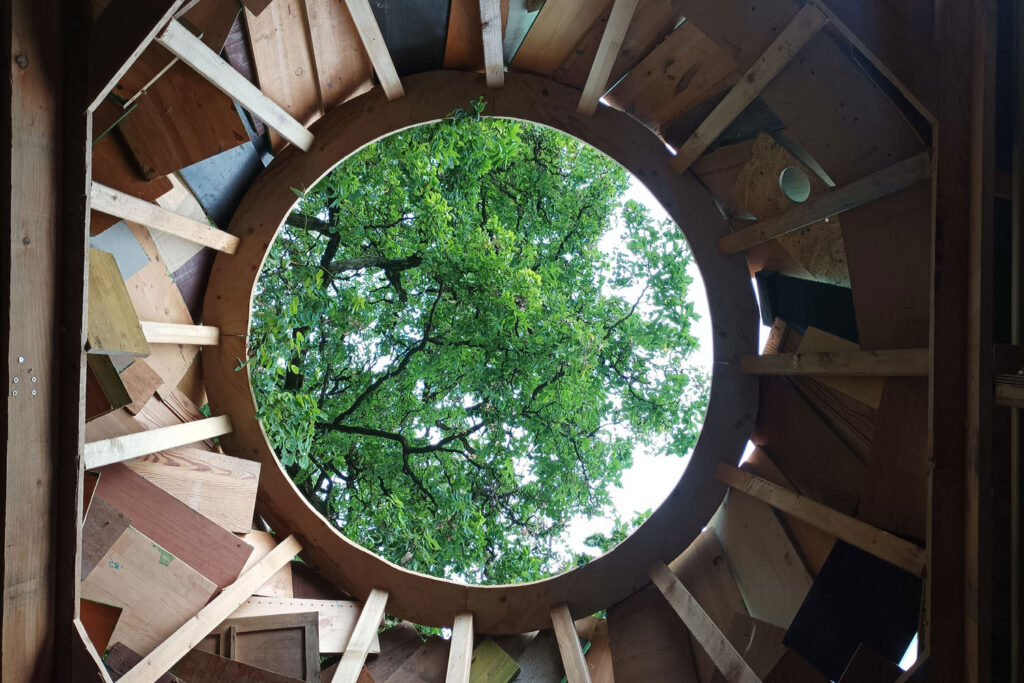
Re-Emerge Pavilion
London, UK
Project details
Client
Architectural Association
Architect
AA EmTech and Hassel Studio
Collaborator
Hassell, One Click LCA
Duration
2021
Services provided by Buro Happold
The Architectural Association (AA) School of Architecture in London has a rich heritage of student-designed pavilions, providing a practical opportunity for architectural students to create real structures throughout the design and delivery of a project.
The 2021 intake of postgraduate students on the Emergent Technologies & Design (EmTech) programme at the AA were tasked with creating a new pavilion in Bedford Square, London.
Challenge
Along with lead sponsor architect Hassell, Buro Happold and lifecycle software company One Click LCA co-sponsored the project, with the students challenged to keep the carbon footprint of the structure to an absolute minimum.
The Re-Emerge Pavilion was conceived to raise the profile of the importance of materials reuse and the significance of the wider circular economy in the industry within the context of the climate emergency.
The project explored new design and construction technologies that repurpose materials that have completed their first lifecycle and can be repurposed towards innovative structural formations. The project addressed themes of generative design, material computation, large-scale fabrication and assembly technologies, emphasising the pavilion’s ecological impact from the earliest phases of the design.

Solution
The use of timber is increasingly seen as one of the most impactful ways to reduce the embodied carbon footprint of a building. Wood is a bio-fabricated and biodegradable material; it is renewable and resilient. It also consumes carbon in its initial “lifecycle” as a tree.
When a timber building is demolished after several decades, it does not produce useless waste, but instead generates reclaimed wood that can be re-used and re-purposed in other applications after disassembly, hence becoming part of the circular economy.
Re-Emerge is created with grade-A reclaimed wood pallets from across London. Wood pallets are one of the most abundant re-used timber elements in the construction industry. Reclaimed timber pallets generally end up in landfill or burnt as fuel, but the students were keen to demonstrate their potential as structural elements for the pavilion.

The structural system for Re-Emerge is comprised of volumetric timber diamond shaped modules created by scoring wood from pallets. Steaming processes were also used to bend the wood pieces. The diamond modules are organised into structural ribs, which are then assembled with lap joints; thereby diminishing the need for secondary materials in the joinery system. The system can sustain loads in vertical and horizontal arrangements.
The project involved a Life Cycle Assessment for the reclaimed timber, which was made available to the pavilion visitors via an app. The employment of life cycle assessment computational workflows allowed the students to take into consideration CO2 emissions associated with not only the material itself, but also its origins and transportation to site.
Structural engineers from Buro Happold supported students throughout the design and delivery of the project and further supported the project by carrying out the necessary risk assessments on the structure before putting it on public display.
Value
The completed pavilion was displayed to the public in Bedford Square throughout autumn 2021 – raising the profile of the importance of principles of embodied carbon in construction and the significance of the circular economy.
At the end of its second lifecycle, Re-Emerge was disassembled. Part of the pavilion has been erected in Hassell’s London studio, part of it is displayed in EmTech Studio at the AA and part of it was sent back to the timber recycling facilities from which the wooden pallets were originally sourced.
The ambition of Re-Emerge is to create a strong dialogue around the uses of the local timber industry and its by-products within construction, and to demonstrate to the world that innovative timber architecture can be created with construction waste, while maintaining a mindful approach towards our environment.

Awards
2022
Architizer A+Awards, Architecture + Collaboration Award: Winner












